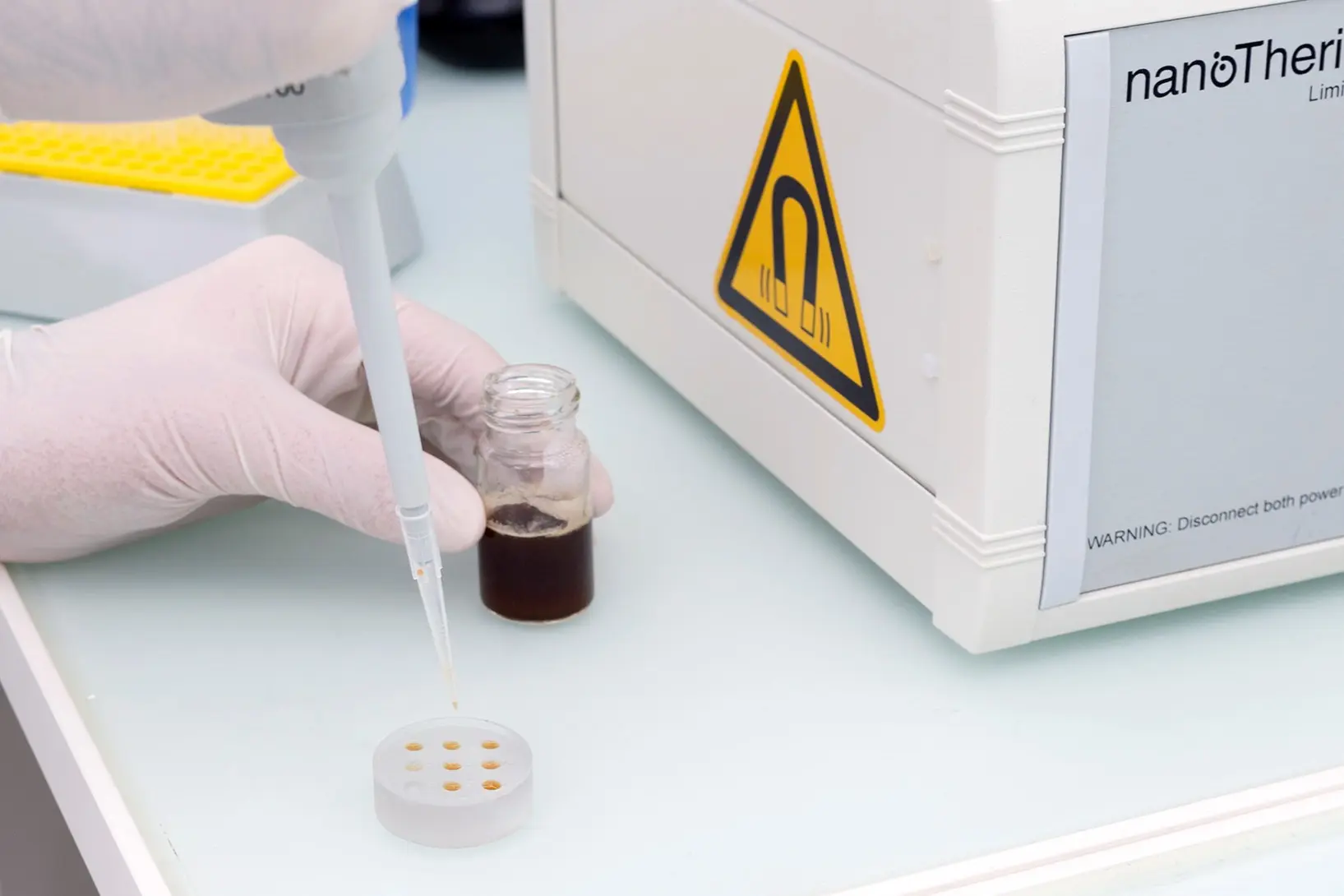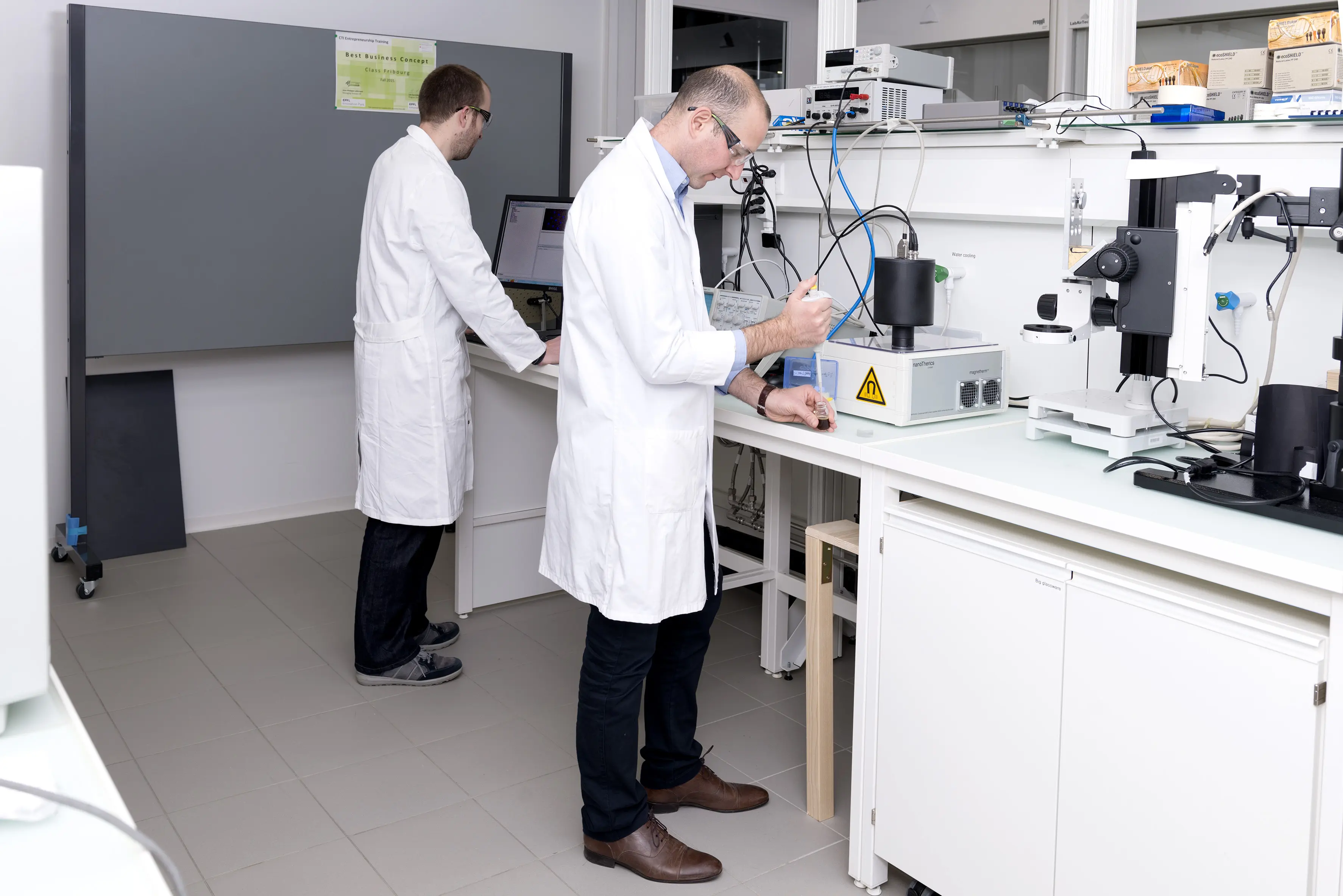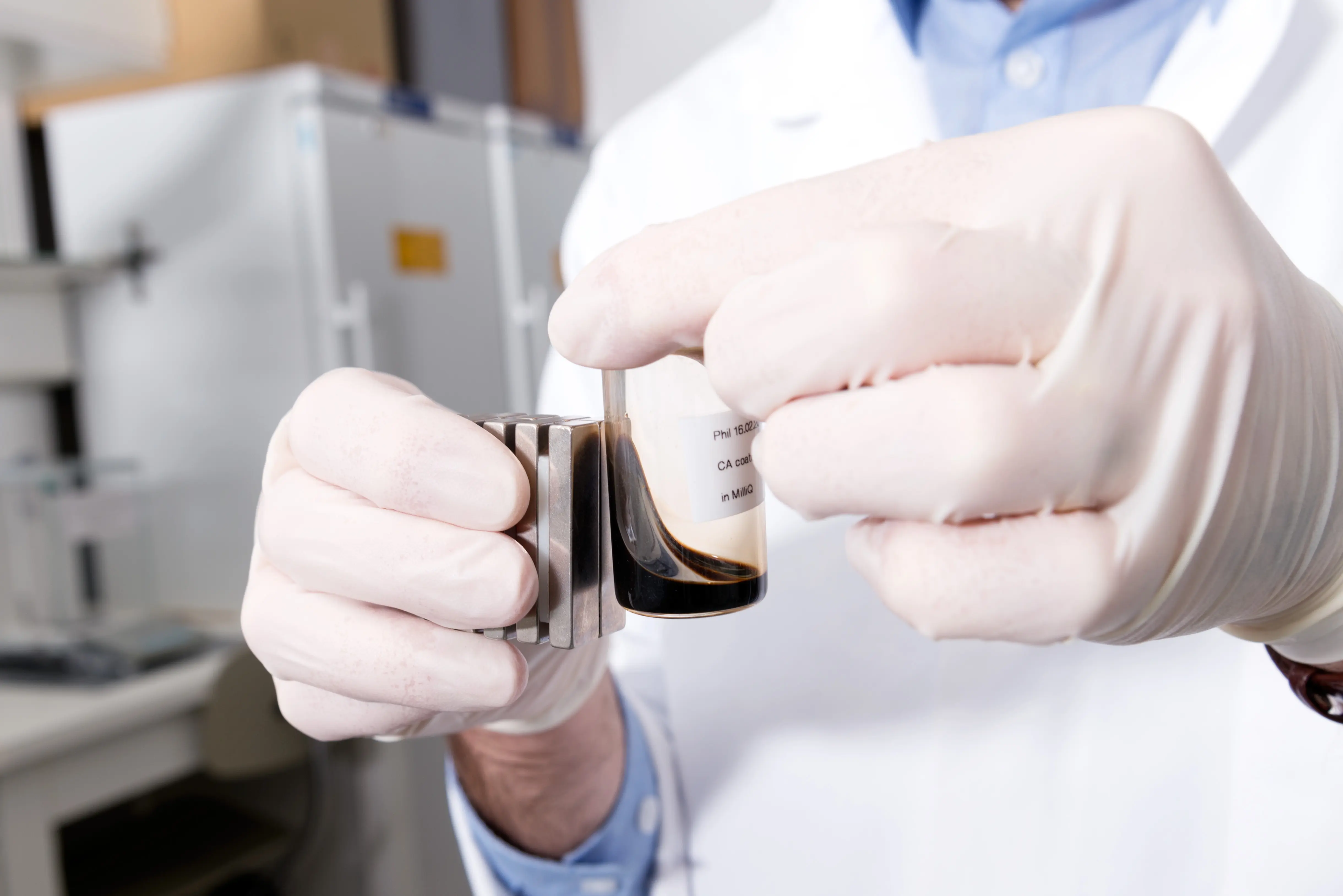Targeted elimination of tumour cells with made-to-measure nanoparticles
ZHAW researchers in collaboration with the Adolphe Merkle Institute of the University of Fribourg have developed a new method for measuring nanoparticles so precisely that they can be produced and dosed to be as effective as possible in cancer treatment. With this form of treatment, the nanoparticles administered to patients are heated magnetically in order to kill tumour cells.
Cancer treatment with nanoparticles has been authorised in the EU and is already being used, but success is still largely the result of conjecture and trial and error. Nanoparticles are injected in the immediate vicinity of the tumour and heated by means of a certain kind of stimulus – in this case, a magnetic field. “The reaction of the magnetic nanoparticles generates heat, which, if dosed correctly, can kill tumours in the way a high fever would”, says ZHAW researcher Mathias Bonmarin from the Institute of Computational Physics. He explains, however, that “the correct dosage of the nanoparticles and the resulting heat generation has not yet been optimised”. In the “NanoLockin” research project, ZHAW researchers and a team led by Alke Fink at the Adolphe Merkle Institute of the University of Fribourg have developed a device which can measure precisely nanoparticles, the expected heat radiation and its distribution
Accurate measurements instead of trial and error

The measurement process is non-invasive, so the nanoparticles can be placed in a realistic environment such as tissue. On the basis of the measurement data, the production and dosage of nanoparticles can be optimised. In this way, it would be possible, for example, to select only nanoparticles with a particular concentration ideally suited to the specific application. This would make the cancer treatment faster, less expensive and more likely to be successful. The Federal Commission for Technology and Innovation (CTI) has recognised the potential of this treatment method and is supporting the “NanoLockin” research project.
Software is the key to precise measurements
The device developed to measure nanoparticles is based on lock-in thermography, which was first used successfully for quality assurance of aircraft components and is also being used at the ZHAW School of Engineering to examine human skin. The contactless measurement method visually maps surfaces using targeted variations in temperature and a highly sensitive infrared camera. In the “NanoLockin” project, the nanoparticles are heated to various temperatures by means of a magnetic field, and the images of the surface temperatures taken by the infrared camera are then evaluated with newly developed software. Since the cooling and heating processes of the surface can differ depending on the physical properties of the nanoparticle, these properties can be deduced from the temperature measurements by means of a complex algorithm. Based on the ZHAW researchers’ experience with lock-in thermography, the project partners have developed a new device designed to characterise nanoparticles. This device has undergone extensive testing at the Adolphe Merkle Institute of the University of Fribourg and been used successfully to characterise magnetic nanoparticles
Contacts
Dr. Mathias Bonmarin, Institute of Computational Physics, ZHAW School of Engineering, phone: 058 934 75 16, e-Mail mathias.bonmarin@zhaw.ch
Prof. Alke Fink, Chair Bionanomaterials, Adolphe Merkle Institut, Universität Fribourg, phone 026 300 9501, e-Mail alke.fink@unifr.ch
Matthias Kleefoot, Public Relations, ZHAW School of Engineering, phone 058 934 70 85, e-Mail medien.engineering@zhaw.ch

